Are Solar Storms Dangerous to Humans on Earth? About the Effects, Including Possible Communication Disruption
The "severe" solar storm in effect has the potential to trigger the northern lights, causing a stunning display of colors visible from parts of the U.S.
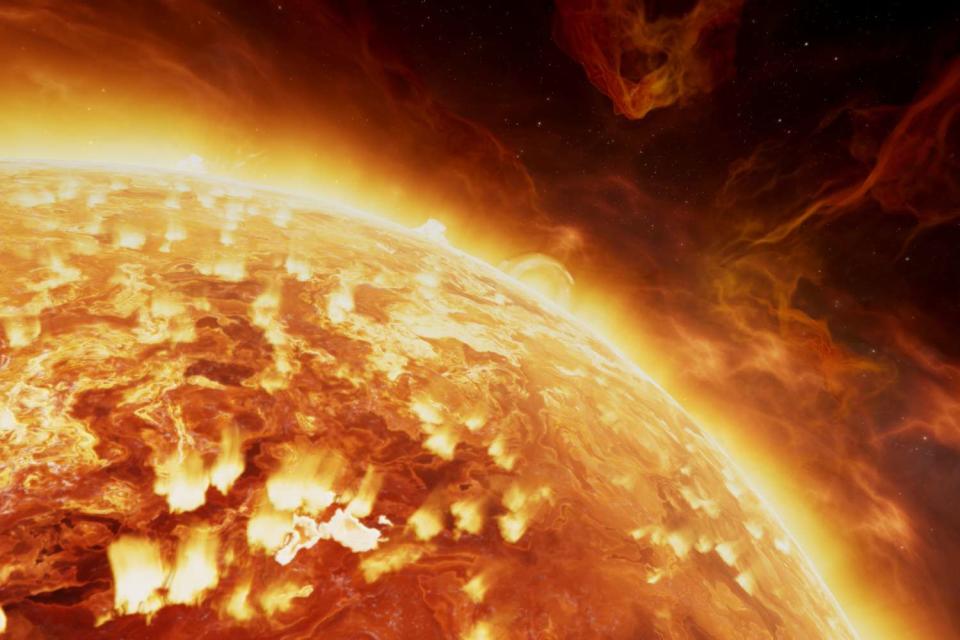
Getty
Solar StormA rare solar storm is headed towards Earth.
The National Oceanic and Atmospheric Administration (NOAA) issued a rare G4 geomagnetic storm watch, marking the first storm of this magnitude in nearly 20 years.
The storm arrives after days of solar flares that reportedly sent bursts of plasma and magnetic fields towards Earth, prompting a watch that could trigger flashy light displays and communication disruptions as a result of the events that occurred in space.
The NOAA used its Space Weather Scale to communicate the storm's severity with the public. The tool describes current and future environmental disturbances of three types: geomagnetic storms, solar radiation storms and radio blackouts.
The G4 geomagnetic storm in effect is described as "severe," the second strongest magnitude on the scale (just below G5: "extreme"). The scale also details the possible effects at each level, in addition to how the events happen and the intensity of the physical causes.
There are three areas, both on earth and in space, that could see effects from geomagnetic storms: power systems, spacecraft operations and other systems like satellite navigation or radio frequency disruptions.
Among the effects that fall beneath the "other systems" area is aurora borealis visibility, also known as the northern lights. The clarity and viewpoint of the rare colorful sight is dependent upon the storm's category.
Read on to learn more about the 2024 solar storm watch, in addition to its effects on Earth.
What is a geomagnetic storm?
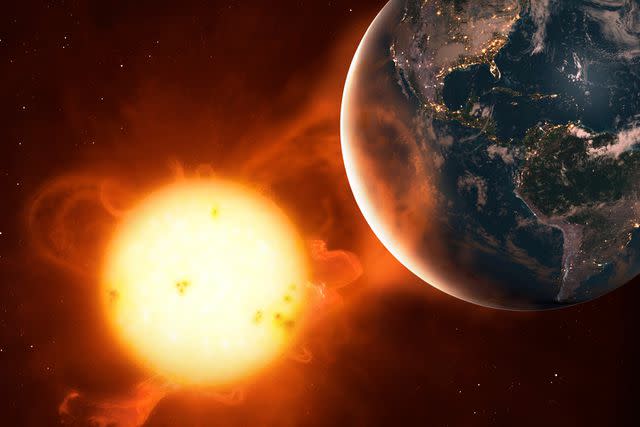
Getty
Illustration of a coronal mass ejection impacting the Earth s atmosphere.The NOAA describes geomagnetic storms as "a major disturbance of Earth's magnetosphere that occurs when there is a very efficient exchange of energy from the solar wind into the space environment surrounding Earth."
In simple terms, this storm is a disturbance of Earth's upper atmosphere. It is caused in part by solar flares, which NASA describes "an intense burst of radiation coming from the release of magnetic energy associated with sunspots."
This particular storm was also caused by coronal mass ejections (CMEs), or plasma and magnetic fields from the sun's corona moving quickly to Earth due to solar winds. Storms can last several days, but primarily will fall between 12 to 48 hours.
Related: Here's How the Jupiter-Uranus Conjunction Will Affect You, Based on Your Zodiac Sign
When will the solar storm hit the United States?
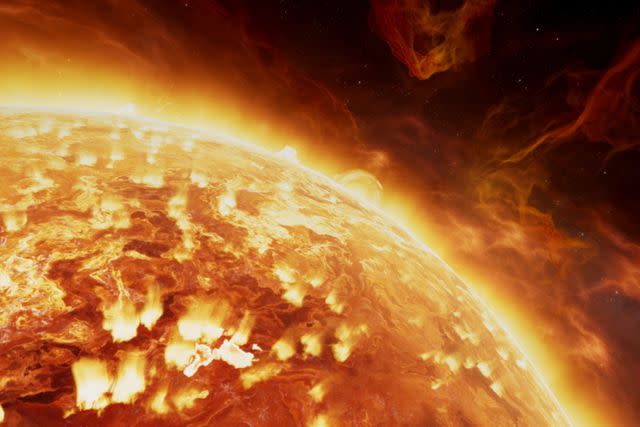
Getty
Star of our solar system 3D illustration close shot. Nebula gases erupting from the Sun's surface.NOAA’s Space Weather Prediction Center issued the solar storm watch the night of May 9. However, the "severe" G4 geomagnetic storm is predicted to buffet the Earth May 10 evening and last through May 12.
A watch alert for a geomagnetic storm of this magnitude hasn't been issued by the agency since January 2005. The alert came after "at least five flares were associated with CMEs that appear to be Earth-directed," per NOAA's report.
Will the solar storm affect us on Earth?
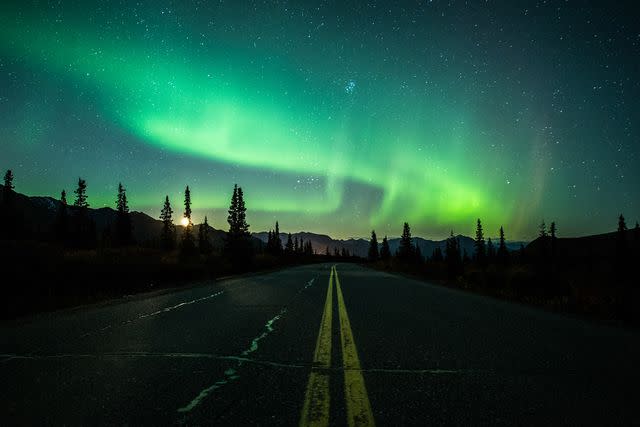
Getty
Northern LightsFortunately, humans have nothing to worry about with the solar storm watch in effect. Despite its strong magnitude, NASA emphasizes harmful radiation from solar flares “cannot pass through Earth’s atmosphere to physically affect humans on the ground.”
However, the G4 storm is considered "severe" because it's capable of causing technology issues and potential communication disruptions on Earth. (Note, G5 storms are the max magnitude of these storms and may have different effects as a result.)
Among the possible consequences of a G4 storm are power system complications like "widespread voltage control problems," as noted by NOAA. Plus, "some protective systems will mistakenly trip out key assets from the grid."
Spacecraft operations "may experience surface charging and tracking problems," the agency writes, adding, "corrections may be needed for orientation problems." Other disruptions on Earth's ground can affect satellite and low-frequency radio navigation.
Related: 4.8 Magnitude Earthquake in New Jersey Jolts the East Coast — Here's the Latest Information
Could the solar storm trigger the Northern Lights?
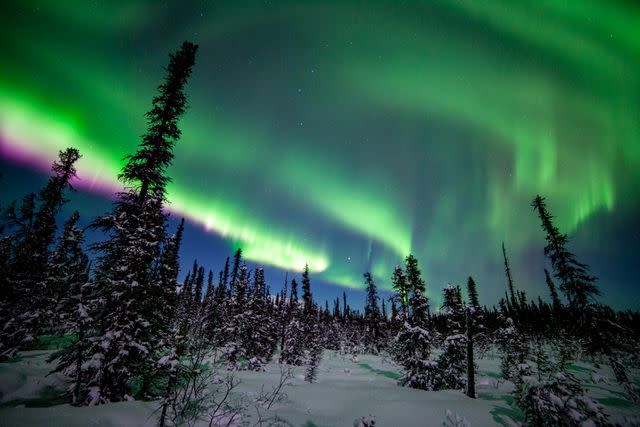
Getty
Northern Lights.The Northern Lights could be triggered by the solar storms. While this technically isn't an effect on Earth, humans will reap the benefits of this stunning display from the planet's ground.
However, the visibility of the lights — also known as aurora borealis — depends on several factors, one of them being location on Earth. Several parts of the United States will have a chance at spotting "spectacular displays of aurora."
Typically, the northern lights are best viewed from high northern latitudes during the winter in Alaska, Canada and Scandinavia. This storm is predicted to be visible from Northern California and southern states such as Alabama, per the NOAA scale.
For more People news, make sure to sign up for our newsletter!
Read the original article on People.

 Yahoo News
Yahoo News 
